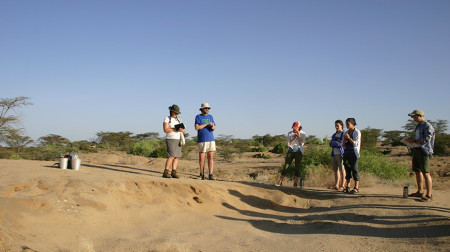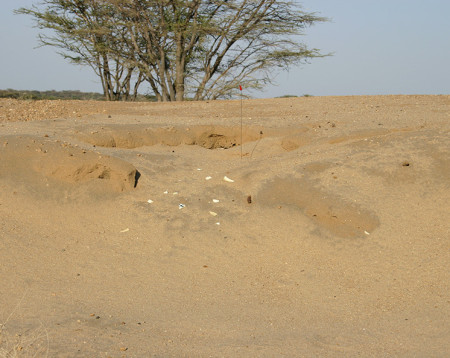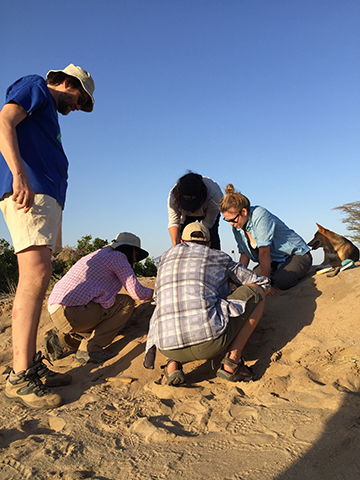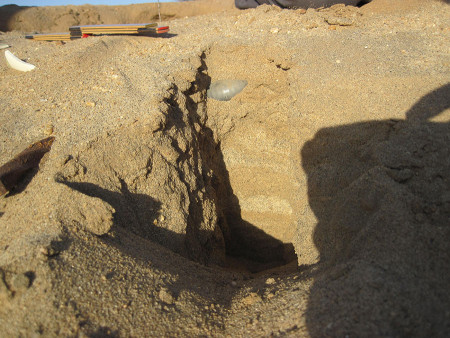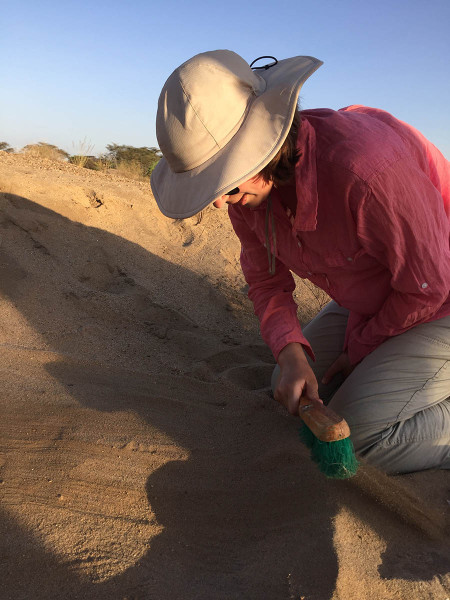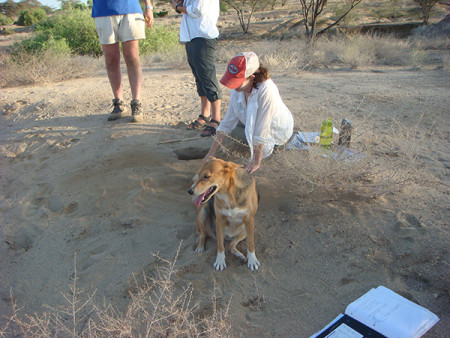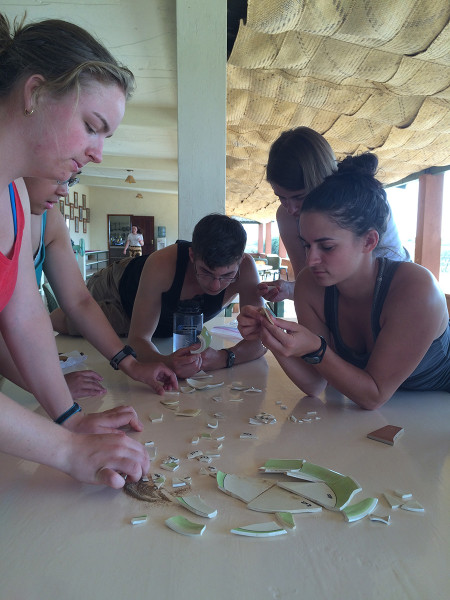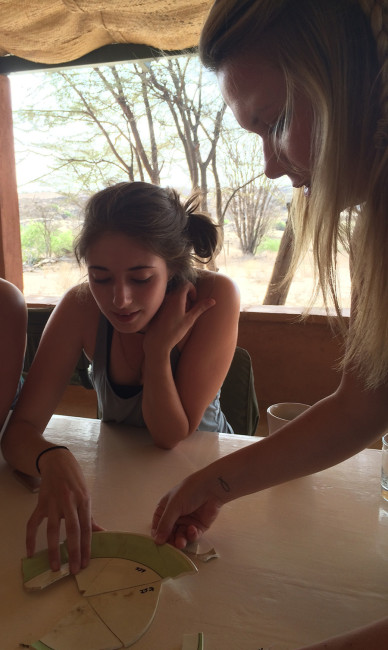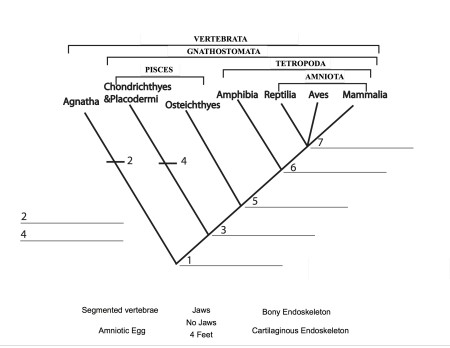The Vertebrate Paleontology & Paleoecology Module began last week under the instruction of paleontologist Dr. Mikael Fortelius from the University of Helsinki. After an introductory lecture on processes that affect the preservation of organisms and their traces, we set out to unearth crockery that was buried within the TBI facility. As part of a taphonomy experiment, TBI students in the Spring 2013 field school reluctantly smashed and buried pottery that had belonged to famous paleoanthropologist Mary Leakey! This year, TBI students unearthed the pieces of pottery as an introduction to surveying, documentation, and collection of fossils and archaeological artifacts.
After a brief survey of the area, pieces of pottery were located and appeared to be eroding out of a hillside.
In the end, we learned that if this were a real fossil or archaeological site, we would NOT collect any items. Instead, we would GPS the location and gather data for a later excavation by a professional paleontologist such as Dr. Mikael Fortelius.
DAY 2- In part two of this investigation TBI students reconstructed the pottery to its original form.
Additionally, students constructed a diagram connecting different plates, bowls, and tea pots to one or more types of crockery based on shared characteristics such as color, shape, and how it was made. This type of figure is used in cladistics to show the relationship between organisms. I have included an example in the image below if YOU would like to fill in the synapomophs. 🙂

